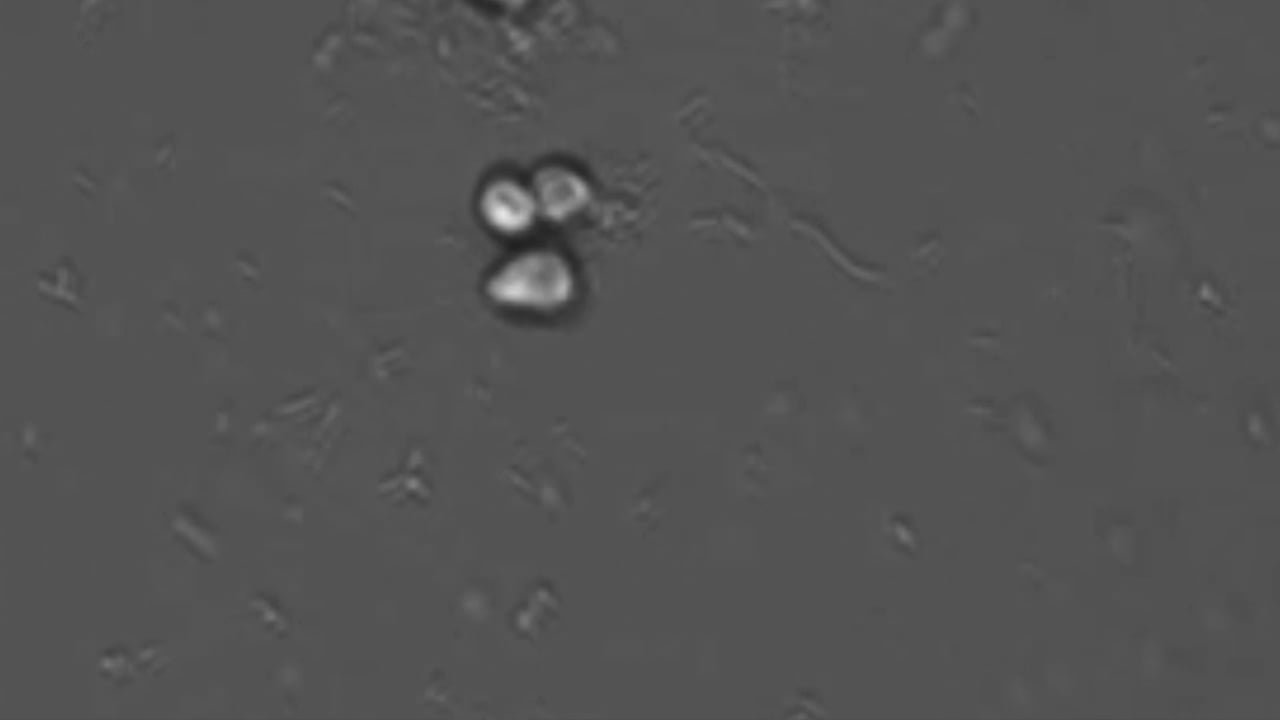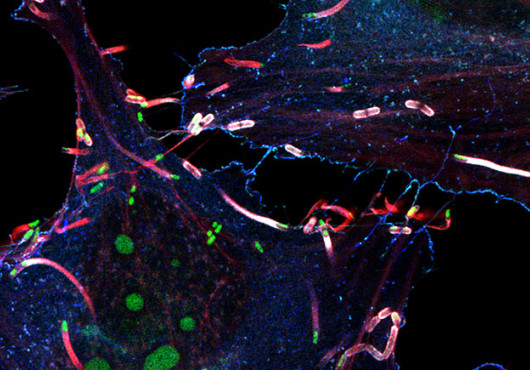
Sometimes scientific experiments take an unexpected turn.
Researchers interested in the evolution of multicellular life were looking for bacteria that stimulate Salpingoeca rosetta, single-cell saltwater dwellers that are the closest living relatives of animals, to form the rosette-shaped colonies that give them their name. But one bacterium had quite a different stimulating effect: It motivated S. rosetta to have sex.
“The last thing anyone expected was an aphrodisiac,” said Jon Clardy, the Hsien Wu and Daisy Yen Wu Professor of Biological Chemistry and Molecular Pharmacology at Harvard Medical School.
The discovery, published online in Cell Aug. 31, is notable for more than mere titillation. It’s the first known instance of bacteria inducing mating in eukaryotes—organisms with membrane-enclosed nuclei and other organelles—potentially providing insight into broader questions of how bacteria influence the development and behavior of eukaryotes, including plants and animals.
“The world is appreciating more and more the importance of symbioses with bacteria, such as the microbiome, but I had never heard of anything like a bacterium that induces sexual fusion before,” said J.P. Gerdt, a research fellow in the Clardy lab and co-first author of the study, along with Arielle Woznica of the University of California, Berkeley. “I think by demonstrating a new type of bacteria-induced behavior, we may inspire others to look in the systems they study and see if they might have missed that bacteria play a role there as well.”
The study also revealed that the primitive S. rosetta can make a molecule called a chondroitin, which scientists thought didn’t arise until many branches later in the evolutionary tree.
“That’s new and fulfilling,” said Gerdt. “It’s also satisfying to see our collaborators, who are experts in evolutionary biology, so excited. It shows how transformative this discovery is going to be for their field.”
Striking swarms and serendipity
Nicole King of UC Berkeley has been studying S. rosetta to help illuminate how humans and other multicellular organisms evolved from single-celled creatures. Along the way, she has revealed how bacteria can influence S. rosetta and other organisms in unexpected ways.
King and Clardy, who share senior authorship of the current study, previously worked together to show that formation of S. rosetta’s distinctive flowery clusters can be triggered by a bacterial protein.
When King’s group added a bioluminescent marine bacterium called Vibrio fischerii to their dishes of S. rosetta, no rosettes formed. What happened instead was “striking,” said Clardy: The tiny S. rosetta flagellates propelled themselves into orgy-like swarms of up to 50 cells each and began to mate.






